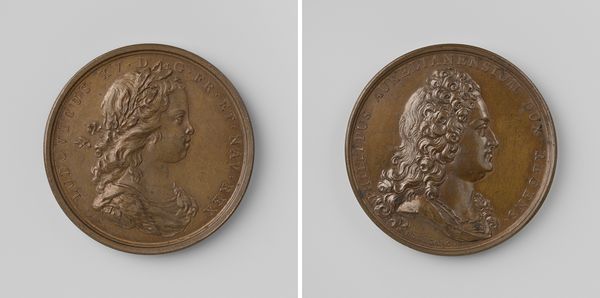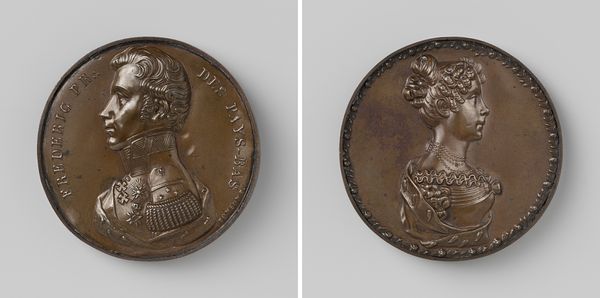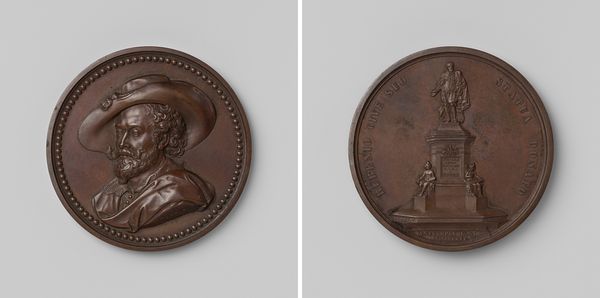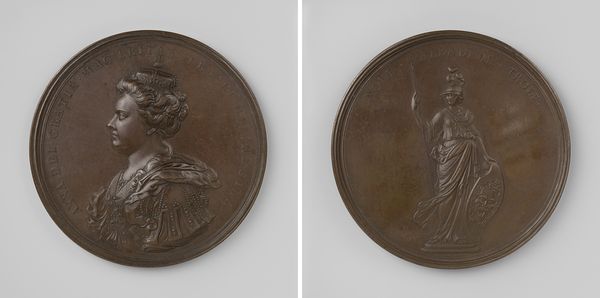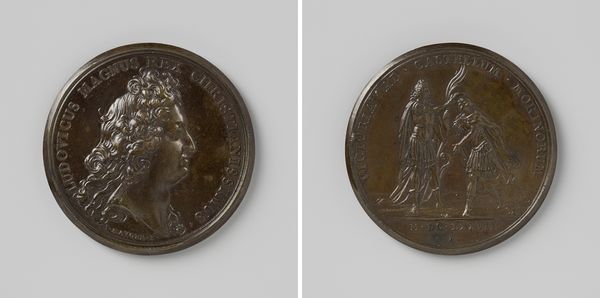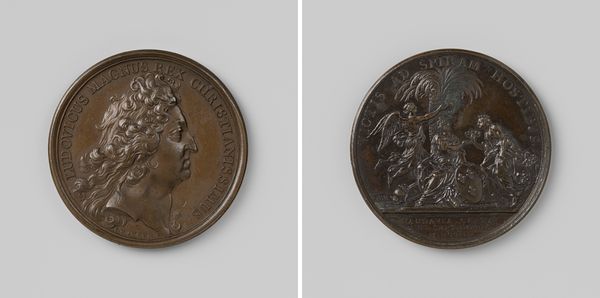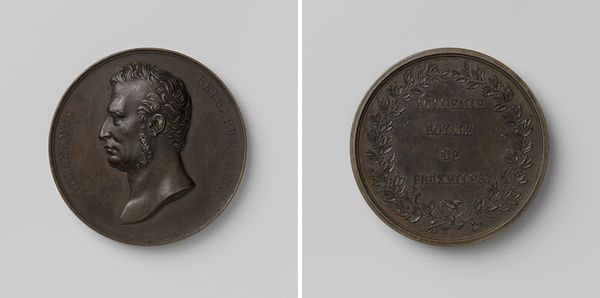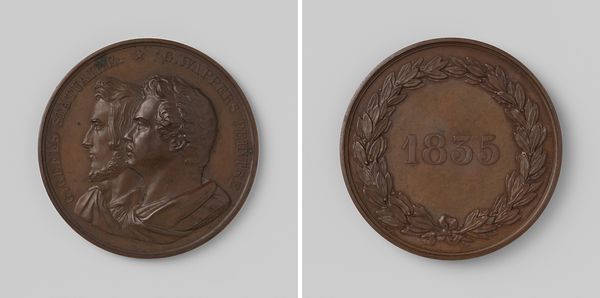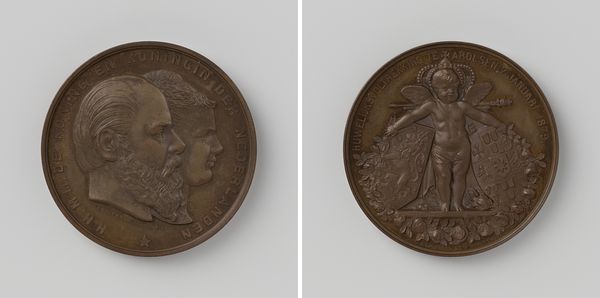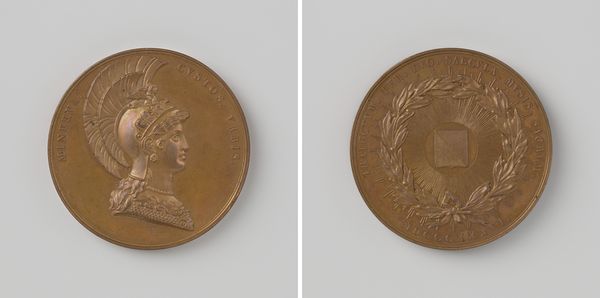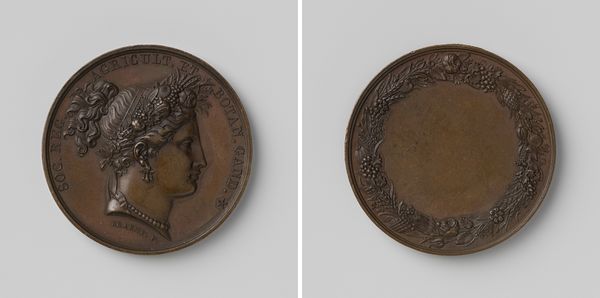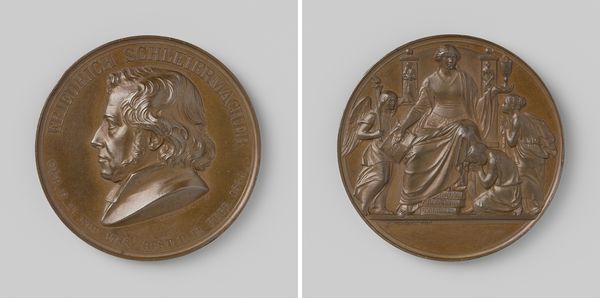
metal, bronze, sculpture
#
baroque
#
metal
#
sculpture
#
bronze
#
sculpture
#
history-painting
Dimensions: diameter 4.7 cm, weight 40.90 gr
Copyright: Rijks Museum: Open Domain
Editor: We're looking at "Geboorte van Karel Jozef, aartshertog van Oostenrijk," made in 1745 by Ottone Hamerani. It’s a bronze sculpture, seemingly a coin or a medal, featuring portraits. The two sides depict family members, with one side portraying parents, the other depicting a mother with her baby. How should we understand this piece? Curator: Well, these medals served as powerful propaganda tools. They weren't just commemorative objects; they were carefully crafted images meant to project a specific image of the Habsburg dynasty. Consider the inscriptions: How do they frame the family and the newborn archduke? Editor: I see… The inscriptions around the edges certainly emphasize the family and perhaps dynastic succession. But, how did its distribution impact its effectiveness? Curator: Exactly! These weren't mass-produced like today's coins. They were likely distributed among nobles, dignitaries, and other influential figures – essentially, opinion leaders. What message do you think Hamerani wanted to convey? What political statements might this family portrait communicate at the time? Editor: The emphasis on the parents first… it gives me an idea of stability and legacy, emphasizing lineage by juxtaposing it with the images of the child and mother to signal dynastic continuation. I can’t help but wonder about how Hamerani managed to achieve such detailed facial likeness on metal. Curator: Good point. Hamerani had incredible skills. Think of it as the 18th-century equivalent of a carefully curated press release. It highlights specific aspects of their reign while downplaying potential controversies or oppositions. The Baroque style, evident in the lavish ornamentation and dramatic portraiture, further amplifies the intended effect. The medium itself, metal, is associated with power, prestige and permanence. What might that suggest? Editor: So it’s more than just a celebratory token, but an object deeply entrenched in political messaging? I hadn’t thought of the power dynamics at play here. Curator: Precisely. Medals like these offer us a fascinating glimpse into how the Habsburgs actively shaped their public image and reinforced their authority. It makes you wonder about the equivalent forms of ‘medals’ ruling families promote today. Editor: I’ll certainly think twice before handling a coin from now on. Thanks for unpacking this interesting artwork with me.
Comments
No comments
Be the first to comment and join the conversation on the ultimate creative platform.


